It’s the end of the world, as you know it, but you feel fine. Why?
Because your tiny house has everything you need to get by. Okay, the Apocalypse isn’t really upon us, but you need to prepare for the unexpected. Even though tiny living involves downsizing, adding these must-haves means you’ll be ready for any disaster.
Portability
The great thing about a tiny house is that it’s easy to pick up and move when disaster strikes. Invest in a tiny house trailer so you and your home can make a quick get-away when necessary. You’ll have a head start evacuating an area since you won’t have to spend time packing.
Collapsible Items
No matter how many square feet surround you, you still must eat. You can whip up a quick lunch or a gourmet meal using space-saving collapsible cookware. You’ll find cooking pots made of stainless steel, silicone, and glass that flatten to a disc smaller than a Frisbee. Boil water in a teapot and strain spaghetti in a collapsible colander. Put your leftovers in collapsible containers. Even wash the dishes in a tub that collapses to a flat shape. If you need it in the kitchen, chances are good you can find it in a collapsible form.
Food
An impending cataclysmic event like a hurricane, typhoon, or even a blizzard in the forecast will empty the store shelves fast. Once the disaster hits, the grocery stores close. But your tiny home will be stocked up on fresh fruit and vegetables thanks to your garden. You don’t need a lot of floor space or a huge yard to grow food. A vertical garden will give you more than enough room to grow the essentials around your tiny home. Climbing plants like pole beans, cucumbers, peas, tomatoes, and winter squash can easily grow up a trellis.
Hydroponic gardens allow you to grow fruit and vegetables inside year-round. And you don’t need soil. This is a must-have if the impending disaster keeps you indoors.
Houseplants
Just because you’re living tiny, doesn’t mean you can’t create a pleasant environment. Your vegetable plants will help, but adding several more small houseplants will brighten your home and help keep you healthy. Houseplants can remove up to 87% of air toxins in 24 hours. Plants with broad leaves can help regulate humidity. So, what do you choose? A tiny house calls for tiny plants. Succulents work well in small homes. A succulent stores water in its leaves, stem, or both. They release oxygen at night, leading to better sleep, especially in limited space. Many indoor succulents stay small, making them an excellent choice for your tiny home. There are many choices when it comes to houseplants that add to your decor. Consider Bonsai, Air Plants, or Anthurium. Choose one or mix and match. Houseplants make your tiny house feel like a home.
First Aid
You won’t be the only one running for cover when disaster strikes. Plenty of creatures, including the poisonous pests, are also looking for a place to hide and keep warm. In Dallas, for example, copperheads and rattlesnakes like the wilderness as much as you, and they could easily make their way inside your tiny home. Black Widows and brown recluse spiders are good at hiding, and surprising you. Stock up on anti-venom just in case the unthinkable happens.
You’ll also need a supply of bandages, aspirin, and safety pins. Other items in a basic first aid kit include:
- Adhesive tape
- Superglue
- Rubber tourniquet
- Eyeshield or pad and eyewash
- Large triangular bandage (to use as a sling)
- Cold packs
- Cotton balls
- Duct tape
- Petroleum jelly
- Scissors and tweezers
- Antibiotic ointment
- Thermometer
- Turkey baster for flushing wounds
- First-aid manual
- Hydrogen peroxide to disinfect
It wouldn’t hurt to put a few surgical masks in your kit. You never know what kind of disaster will hit.
Containers
Even standard size houses can lack storage, so coming up with enough of it in a tiny home is especially challenging. Circular containers take up a lot of space, so look for square ones. You can stack them tightly and push them against a wall. Dry baking goods, like flour and sugar, breakfast cereal, chips, and pretzels, need less room when poured into a square container. You can even put cold items in them and stack them in your small refrigerator. Durable, airtight containers will do the trick. And don’t forget slightly larger containers for toys, clothes, and pet necessities. Your motto, when it comes to containers, is stackable!
Fresh Water and Water Filter
Finding water won’t be a problem in a blizzard, but fresh drinking water will be in short supply in a hurricane or nuclear holocaust. Keep a couple of gallons in the freezer. When the power goes out, you’ll be able to keep things cool for a few days. A portable water filter will also allow you to fetch water from streams.
Hooks
You’re looking for ways to use every square inch of space in your tiny home. Furniture takes up most of the floor, but you still have the walls. That’s where hooks come in handy. Use wall hooks to hold hats, bags, sports equipment, and shoes. In your sleeping space, store your jewelry and accessories on hooks. You can use them in every room. Put them as high as you can, maximizing wall space. Solid, sturdy hooks work best. Get creative and incorporate them into your home decor.
The great thing about a tiny house is that it’s easy to pick up and move when disaster strikes. Invest in a tiny house trailer so you and your home can make a quick get-away when necessary. You’ll have a head start evacuating an area since you won’t have to spend time packing.
Surviving tiny house living (not to mention, the Apocalypse!) is a matter of being ready. Stocking up on these items can help make your journey a smooth one.


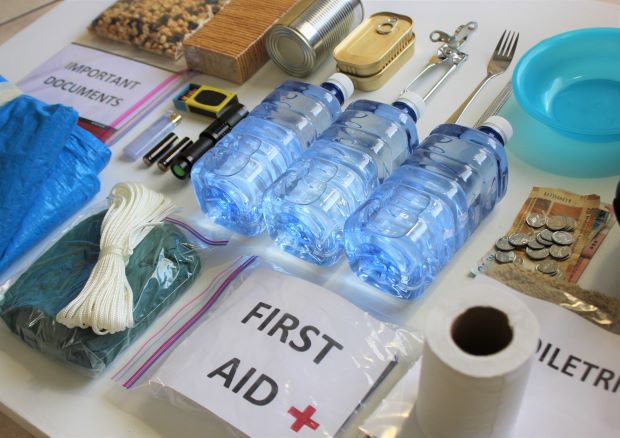

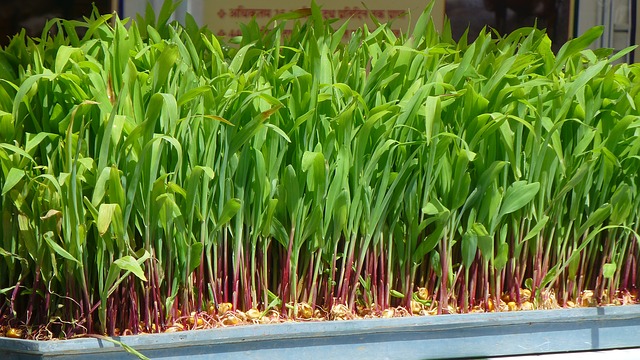
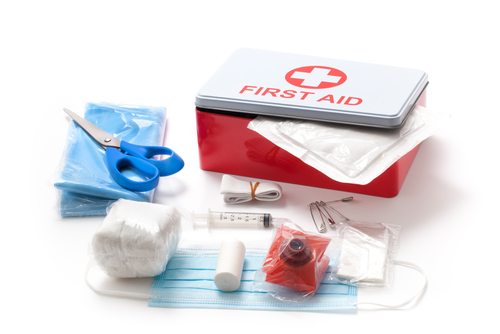

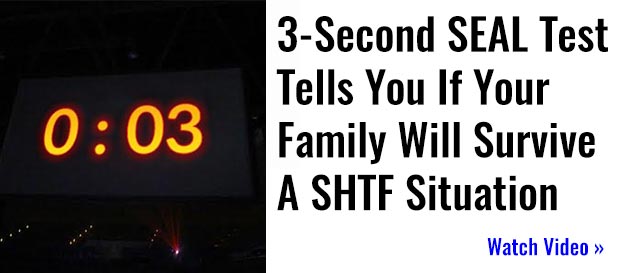

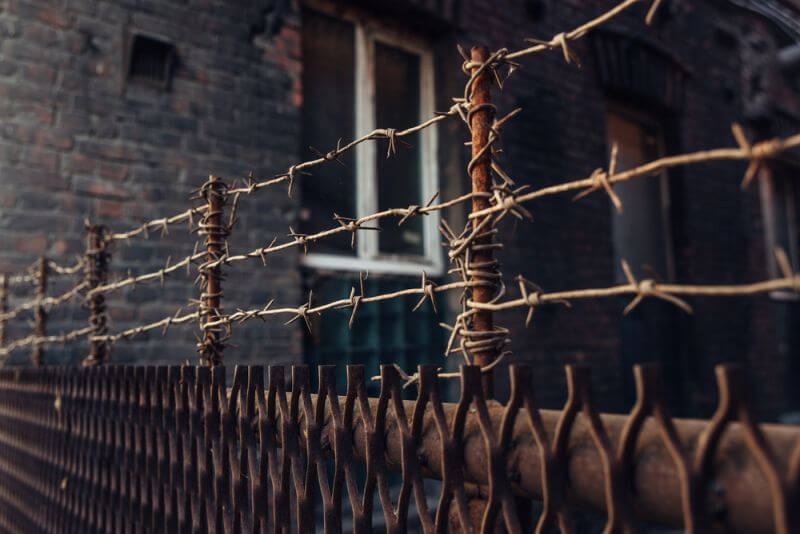

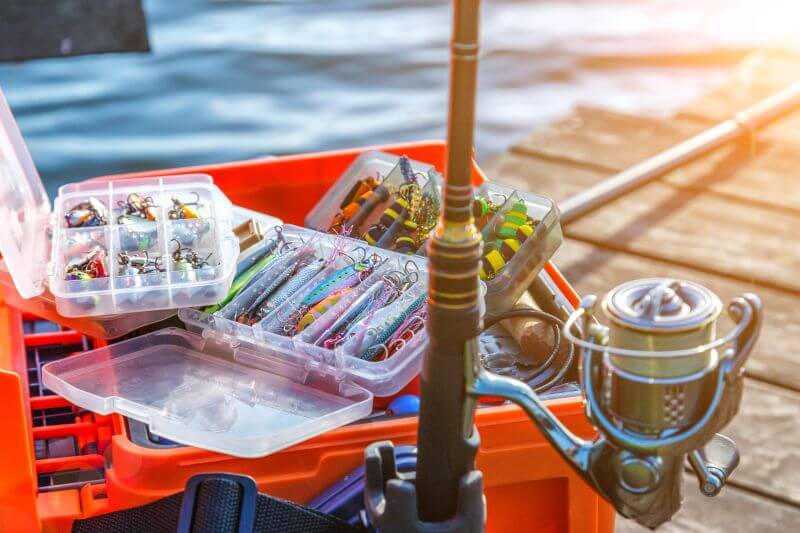


Susan Tadlock | January 27, 2020
|
It’s nice to say “stock up on anti-venom (or antibiotics,etc) but these items are medical and need an Rx, and then with antivenom it usually needs to be refrigerated, so how would the average person get these? And dont forget about expiration dates. Any advice on this?
Toby | February 19, 2021
|
There are alternatives. Colloidal Silver is a powerful antibiotic that can be home produced using silver electrodes. For antivenom, I use Comfrey tincture (because it stores well) that I make at home, for healinn Brown Spider bites. I have nead it works on hobo spiders, and rattlesnake bites, but I haven’t had the opprotunity (thank GOD!) to test that out. Echinacea oil also works on Rattlesnake bites, it was the original ‘snake oil’ of days gone by. Study herbals, and you will find an amazing pharmacy there!
Lisa | May 7, 2021
|
I also do CS. Learned a new one on the antivenom. Try essential oils, frankencense for scorpion bites.
Also a natural predator are Lizards. Just got that one this week.
JESS | November 14, 2021
|
There is also a easy to store homeopathic remedy for spider bites (poisonous?) We used it on our Amish friend that could not seem to recover on his own from a bad spider bit on his back. This product really, really helped him a lot! I believe it was called “Tarantula” homeopathic and came in small pellet form. Homeopathic meds. work so well and do not require refrigeration or super-special care…can be simply transported in a pocket! Great for bugging out.
I even once knew a lady down in FL who treated both animals and humans with brown recluse spider bites wtih Young Living’s Essential Oils of Melrose (Tea Tree, Clove and Rosemary) and Frankincense to heal the sloughing off/rotting skin. The Tea Tree Oil is antiseptic, as is the clove, and Rosemary is both antiseptic and has cell regenerating properties!! Frankincense is famous for its amazing healing properties!! She always swore using those worked!!! Now, I’ve never tried that, so no guarantees on how to make it work like she did. But I think she just dropped the oils right on the affected tissues/in the wounds. This is what she shared with me years ago. These are semi-expensive products, but worth every cent because of the purity and potency of YL’s products, especially if they save your body!!!
JESS | November 14, 2021
|
Sorry about my typing…an easy to store homeopathic remedy…and bite on his back, not bit on his back! Wanted to edit my post, but did not find an edit application!!
Dale | January 27, 2020
|
The idea that you can grow enough food to feed yourself in a tiny home or a small hydroponic set-up is misleading, at best, and an outright lie, at worst. You may be able to grow a few herbs or a couple of tomato and pepper plants, but not much more, and those certainly won’t keep you alive. I’ve been gardening for nearly fifty years and it takes a large plot of land to feed yourself. My garden measures 50′ X 30′ which is about the minimum amount of ground it would take to feed a single person. I grow corn, potatoes and green beans (all of which are staple crops), in addition to other desirable crops such as tomatoes, peppers, onions, garlic, squash, cucumbers, melons, broccoli, and strawberries. Even with my 1500 sq. ft. of garden space, I must cram all of those crops into the available ground, and it leaves me with no room to spare. There is absolutely NO way that anyone is going to fit a 1500 sq. ft. garden into a window box on a tiny house, or a small hydroponic set-up!
The crops that will keep you alive and which you can store, long-term, such as corn, potatoes and green beans, take up large tracts of ground. You can’t grow them in a window box planter. You may be able to grow five or six bean plants, but those few plants will only produce a total of about three or four pounds of green (not dried) beans. If you allow the beans to stay on the plants and dry for long-term storage, you’re talking a total of maybe half-a-pound of dry beans. Obviously, that’s not enough to feed you and keep you alive for a year. Even if you grow the beans, indoors, so that you can grow them year-round, it takes beans 2 – 3 months from planting to harvest, so you’re still talking only a few pounds of beans per year — not enough to live on.
Here’s a statistic to put things in perspective: It requires 33 ACRES of land to grow enough food to feed the average American. That figure includes the land to grow feed crops for the cattle, hogs, chickens, etc. that we eat in the form of meat. It also includes the land to grow fruit and nut trees, and sugar cane or sugar beets so you can sweeten your coffee and bake cakes and cookies. Still . . . 33 acres is a HUGE amount of land. The average plot of land for a residential home is 1/4 acre. So, you’re talking the amount of space occupied by 132 homes to feed ONE person! Now, do you understand why we have “factory farms” in America? Obviously, no one is going to be concerned with growing fruit trees, sugar and cattle feed in a TEOTWAWKI situation . . . at least, not at first. Food for survival is what we’ll all need and the 1500 sq ft. of garden space in my yard is about the minimum amount of land required for that purpose.
So, please, let’s stop this nonsense about being able to feed yourself, and your family, from a couple of tiny planter boxes! People who don’t know anything about gardening are liable to believe that crap and, when we have a SHTF situation, it may end up getting them killed by starvation.
Michael O'Flynn | January 28, 2020
|
thanks Dale
Nancy | June 3, 2020
|
Traditional gardening, yes. However you can do an amazing amount of gardening on less than that for more people. You absolutely do not need 33 acre, unless you are growing grain. You can actually have a mid size green house fish tank for protein, irrigation, and fertilizer) and 1/2 acre of intense farming in the summer, to have and store enough food for about 6 people. Small garden tactics, grow lights (need electricity of course or solar) for micro greens in the house, potatoes in 5 gallons buckets, and many other tactics can give you a good supply of food. Not what you may be accustomed to, but survivable. Combined with dry pack foods, stored grains, etc., you can survive and thrive for q long time. . Granted, not in a tiny house, unless it is just you.
Karmik | May 8, 2021
|
i concur ……. i have a deck garden and grown in planter pots. I grow several different types of lettuce, several different types of peppers(both hot and normal), Cucumbers, peas, broccoli, radishes, carrots, sunflowers, tomatoes, and beans. I also have a peach tree. My deck is 12 x 16 and no animals can get up in there. I have deer in my yard almost every day, so if i wasn’t a vegetarian, i could have tons of deer meat. I also live near numerous lakes that are well stocked with fish, but again, since i’m a vegetarian, i can’t use them. But in a SHTF situation, i have resigned myself to eating fish if necessary. With all that said, during the grow season, i can mostly feed myself from my deck garden, so the notion that you need 33 acres for one person to survive is a little exaggerated. My total property is a quarter acre. If i used all my land to grow plants on, i could easily grow enough food to last me one year, if i did it right and had no catastrophes.. The trick is to can, bottle, or dry all the excess that that amount of land could produce. Furthermore, if i wanted to keep chickens on my property, i could, and then harvest their eggs…. although i’d have to either grow corn or find some other way to feed them. But, it is doable if done right !
Dropzone | June 3, 2020
|
Well said Dale.
Stormy Sampson | June 3, 2020
|
Hi there Dale. I have to heartily disagree. A 1000 sq.. ft. of raised beds makes so much food I am feeding the neighbors AND canning AND dehydrating And blanching and freezing…to get harvests one needs education. Period. Making beef jerky is easy. Pickles and salsas canned carrots, beets, potatoes, tomato everythings, Horse radish…water cress, rhubarb, boysenberries, raspberries….building one’s own dehydrator with 5 or 6 18 X 18 inch gal. mesh shelves. Dried tomatoes…Strawberries, dried! Blueberries frozen.. Onions and garlic…we devoted an entire bed to garlic we started in the fall this year. Rotation is so important but it takes two years before being able to plant the same genus again in that soil. that is a hard and fast rule.. Cucumbers take little room and I can barely keep up making pickles. Out of a 6X6 bed. 60 quarts of pickles? I enlarge my gardening real estate using pots. Always with potting soil NOT garden soil for Tomatoes, Potatoes, Egg Plant, Peppers all in the same family while the beds get through 2 years of ‘fallow’ of that species. I grow indetermi9nate tomatoes that climb vertically as well as other vines. Pole beans. Peas… We added 400 square feet of a garden that is not covered with a greenhouse skin. This is major experimentation while we preserve, give away, dehydrate, keep in a cool cellar. Practice is important. Using certified seed whenever possible.
Glenda McGee | September 6, 2020
|
Stormy, I would be very interested in some of that education you were talking about. With the way our world is any suggestions for a quick course. Don’t feel like time for a long experiment education is going to be available before I need to know what I need to know.
Ellen Whiting | February 1, 2021
|
YouTube: Charles Dowding, Huw Richards, Grow Food Well with Tom Bartels. Watch a few of these videos and more will pop up in your recommended list. Take notes and make a plan. Start out small and manageable, then expand as you gain confidence. Keep a log of successes and failures for future reference/improvements. You will be amazed at the bounty.
Bill in Idaho | June 4, 2020
|
Good work on your article, Carmen !
Dale, I hate to rain on your parade, but I must – just the facts. (From 35 years of experience). If Anyone is Not Growing (Only Heritage/ Open Pollinated Varieties) – of Dry Beans, Rutabagas, Sweet Potatoes, Garbanzos (aka chick peas), Hard Corn, Winter Squash, Andean Grains, and Alliums (esp. Garlic) – then they Cannot produce enough Nutrition for any human. Talk and argument won’t change the Caloric/ Nutrients supplied.
Rachellé | June 24, 2020
|
Thank.You.DALE! Sometimes you need a little more experience to get things into clear view 🙂
Bill In Idaho | September 5, 2020
|
Dale, Green Beans are a terrible waste of time and garden space. You need to raise heirloom “Drying” Beans – Grow plentiful and Store/ Keep well. Also Important are Winter Squash (+ pumpkins), sweet potatoes ( I Did NOT say Yams), rutabagas, Garbanzos, and winter greens (kale). Much better choices – plan carefully.
E. Bennett | September 5, 2020
|
Whoa Dale- mind blown here! Thanks!!
Al | February 1, 2021
|
You can acquire fish and bird antibiotics from pet supply retailers. (Fishmox, etc which are the same as human antibiotics.)
Of course you will not know in advance what infections you will be fighting off to know what antibiotics to buy so you might have to buy 3 or 4 types. You still will need to know what antibiotic to treat what type of infection. Usually a culture test is performed by the doctors office to determine that.
Glenn Trombly | February 1, 2021
|
Well put.
Wm | November 21, 2021
|
I read a book once and it was stating that you could grow enough food on 1 acre of land for a family of 4. I have not tried the methods used in the book, but it stated that by crop rotation and growing multiple crops together it could produce enough food for 4 people. I think it was called “square foot gardening “. It was a very interesting way of crop rotation and replanting the ground with another crop as soon as the first crop was harvested. They did leave one plot ferral and not planted each year. That way the soil could regenerate. They never grew the same crop two years in a row on the same plot, they rotated where the crop was planted last time to a different plot, to allow the soil to regenerate and replenish the minerals that the previous crop used up. They were very savvy at what to plant where and with what other crops that would benefit the other crop. One would use nitrogen and the next crop would replace the nitrogen in the soil. Some times they planted a cover crop on the ferral plot and then would turn it under to fertilize the ground.
Bill In Idaho | July 11, 2021
|
Dale, if you are wasting valuable garden space growing green beans (zero nutrition), melons, and strawberries – then you are missing the “boat”. I am a “Grow Bio-intensive” master gardener, and I can grow more in my 45′ X 90′ garden than the usual way on 5/8 of an acre.. I grow melons and winter squash along my back-yard fence. Use your head more.
William Halford | November 14, 2021
|
So green beans have “zero nutrition”? They may or may not be the most ideal bean to grow, but that’s neither literally nor figuratively true. They have good amounts (above 10% USRDA) of vitamins A, C, & K. Also iron. Plus lesser amounts (less than 10% USRDA) of numerous other vitamins and minerals. In addition to that, there’s also other nutrients like lutein-zeaxanthin that don’t have a USRDA assigned to them.
https://www.nutrition-and-you.com/green_beans.html
Mae | July 11, 2021
|
A dose of reality. Thank you. In a real survival situation with a bug out location, that location needs to be stocked full of everything. Hopefully hidden so that no one else knows the survival food and water is there. Otherwise any and all food must be taken in the tiny trailer and that’s going to be real hard to do. Plan ahead. If things do go south, a prepared family will have all they need at their bug out location. Or stay put and ride out the storm where you are.
Brenda | November 14, 2021
|
Absolutely, Dale! The only help those few plants that could be grown inside would give is supplemental to provide some fresh antioxidants to a diet of stored food. And not much of that…
Jimmy Dickens | January 27, 2020
|
You are absolutely right Dale. I have planted and harvested a few crops in my time. Folks need to team up with some experienced farmers who have some
garden space that they are willing to share for labor. Otherwise, they had better stock up on dried beans and rice and water.
Jefferson NWENGLAND | February 4, 2020
|
This is my greatest argument against the lone wolf survivor.
1 person a grower
1 person a medic
1 person a guard
Etc etc
Each rotate watch duty and nurse others as needed (e.g. injury)
Not to mention social interaction.
TruthB Told | January 27, 2020
|
1. Solar powered generator
2. Small refrigerator
3. Large supply of BOTTLED beer (this why you need 1 &2)
4. Chips & Salsa
5. Tums
You may not survive long , but you will be surviving in style.
Dean | February 28, 2020
|
Solar powered generator seems to defeat the point….just harvest the solar power
Geo-Stu | January 28, 2020
|
Dale, I’m curious where you got your figure of 33 acres “to feed the average American”. With 350 million Americans each requiring 33 acres, that equates to 18 million SQUARE MILES! That’s more than four times the entire area of our country including Alaska.
crecia | May 7, 2021
|
yeah maybe to feed them for life! You can grow food in uncommon methods, i.e. vertical etc to get more from your space
Mark | January 28, 2020
|
Not sure I understand the message here, sounds like we’re talking about the advantages of living in tiny houses, and what you can do with your tiny house, and how to hang your jewelry on tiny hooks in your tiny house, and if you have a tiny house there won’t be that much to pack up and leave with your tiny house…? I must have missed that article. That brings me to my second question, if you have a tiny house on a plot or property of some kind, why do you make it sound so important and such an immanent need to….leave that property? and go where? Fight the masses for some other plot of land to hopefully put your tiny house on ? (scratching my head), if I already have a bit of land with which my tiny house is on, I would hopefully be more aware of my surroundings (being that I’ve lived there for a spell) 1. maybe have an outside garden, 2. know all escape routes if i’m unable to defend my ground, 3. friends/family know where to find me, 4. know where all the available hunting/water spots are, the list goes on.
It just doesn’t make sense to me to “pick up and leave” unless there’s some scenario where it’s absolutely necessary and life depends on it. This article says right out of the gate that’s the second thing you do after you pack it up “pack your tiny house and bug out”… and be at a huge disadvantage like everyone else. Really?
We’ve all read the many important articles of emergency items to store or pack in a bugout bag or vehicle, we all know that, and that’s very important, but this article seems to convey that we need a tiny house to put all these things in and split when shtf.
Maybe someone can clarify.
Wm | November 21, 2021
|
I agree the article is talking about 2 different things and is a little confusing. I’d stay put where I’m at until it’s absolutely necessary to bug out. The tiny house is a great movable home, but you can’t store your food stores inside it and still be able to live in it. The canning, dehydrating and preserving of food takes up a lot of space and supplies to store the food in is a lot. Jars, 5gal buckets, mylar bags and things all take up space a tiny home dosen’t have. Bugging out should be the last resort.
Dave Gragg | February 19, 2020
|
If you had been a resident of Paradise, California, you could’ve just hitched up your tiny house and drove it way down the road… After the fire is over, you could drive it right back…
Dale | September 5, 2020
|
Hey, Stormy. Bill in Idaho makes a good point and he and I are thinking on the same wavelength. I’m talking about growing enough food to keep myself alive and healthy, year ’round, in a TEOTWAWKI situation. I grow cucumbers, too, but as a summertime treat. Cukes won’t keep you alive, even if you’re putting up 60 jars of pickles from a 6’X6′ bed. Did you ever read the label on a jar of dill pickles? The caloric content is zero! You can eat pickles till you can’t hold any more, and you’ll still die of starvation. You need to grow crops like corn, potatoes and some of the things that Bill mentioned. In other words, calorie-rich crops. Things like watercress, rhubarb, boysenberries and raspberries don’t fit that bill. Also, you need to be able to preserve your food, whether by freezing, canning, dehydrating or – best of all – freeze-drying. The growing season where I live is barely four months long, which means I have to grow enough food in that four months to last me for a full year: 8 mos. when it’s too cold to garden + 4 mos. when my garden is growing and I’m eating food that I grew last year. If you’re growing food for your survival and all you’re going to have to eat is what you grow with your own hands, you need to grow lots of calorie-rich crops that can be easily preserved. Geo-Stu . . . I got the figure of 33 acres of land to feed the average American either from Science News, a scientific journal I subscribe to, or National Geographic. I don’t remember which. But, there are several things you’re not taking into account. That 33 acres supplies EVERYTHING that we eat, including meat, eggs, breads and cakes, dairy products, sugar, coffee, etc. And, yes, it’s a tremendous amount of land, but you forget that we are importing food from around the world, every day. Not all of that 33 acres is in America. In many cases, people in other countries are going hungry to grow food to ship to America, so that they can have the money they need to survive. No people on earth consume more food than Americans. Also, no people on earth WASTE as much food as Americans do. How many people fix dinner for their families, eat half of it, then throw the rest away instead of putting it in the refrigerator for another day, because they don’t like eating “leftovers.” I grew up eating leftovers, and I eat them, now. I do not throw away food! There are billions of people around the world who would kill for the “leftovers” that Americans throw away without giving it a thought. Then, you have to take into account the food that goes to waste during processing, packaging, shipping, etc. If you want to have a heart attack at the food that Americans waste, I invite you to visit an industrial bakery some time. Easily, HALF of the bread, cake, rolls, etc. produced by an industrial bakery goes to waste. I’m talking hundreds-of-thousands of tons of flour, sugar, yeast, etc., every year! If it isn’t lost in the production process, it gets tossed after sitting on the grocery store shelf for more than three or four days. Take it from someone who knows, because I worked in that industry. So, yeah, I agree with the figure of 33 acres of land to feed a single American. The problem is that Americans aren’t eating all of that food and probably the majority of it goes to waste.
Jimbo | February 1, 2021
|
Another thing touched upon by Susan & Dale, but not actually address in depth is the expiration dates on foods, medicines & anything else. The products with an expiration date, do not automatically go bad the next day, as if foods, medicines & other items can actually read. In most cases the expiration date is length of time the manufactures only wants their products offered for sale, because of predetermined parameters the manufacturer has set, which may or may not have anything to do with quality or potency in the case of pharmaceuticals.
Pharmaceuticals, especially maintenance RX items present a greater problem simply because of their restricted nature. Those first aid supplies, and there are preparations, not for venomous snakes, but for less venomous creatures like wasps, yellow jackets, hornets, etc called “Sting-Kill” which is an external Anesthetic Disposable Swab (5 to a package) and they work extremely well. There are other similar products on the market, but none have worked as well as the Sting-Kill for us. Having a well stocked first aid kits with all types of internal medications, external medications along with products for injury and wounds including sutures, medical staple guns and/or needles for suturing needed repairs, along with the various instruments. It is also good to remember many things can be repurposed during times of disasters and feminine pads make excellent wound dressings/packing material. For individuals with a noise bleed, junior tampons can be cut in half (into half lengths) and they make an excellent substitution for the normal nasal dressings. These are just but a couple of the many substitutions which can be made during tumultuous times.
Dale is most correct we are as a whole a nation of wasteful people. We eat leftover and in times past when we killed our own swine, the only thing we didn’t utilize was the squeal, which we never learned how to capture. The other side of the coin is, the majority of the people alive today do not know how to raise a garden and neither do the majority have the adequate land or tools to work a garden with. Growing the crops is just the beginning. Without the knowledge & equipment to process the foodstuff for long term storage the food crops are only usable fresh, unless allowed to dry naturally, which not all crops are capable of. For those in areas with abundant sunshine and temperatures capable of dehydrating foods, it takes longer and greater care to protect the foods being dehydrated using solar energy, from the elements, but that is the only other mostly equipment free preserving method, available. Even utilizing this simple method of dehydrating, there is still some knowledge necessary to produce a usable finished product.
All in all knowledge, is the most valuable asset one has in uncertain times, and the ability to remain calm under pressure. Hysteria will only worsen the situation.
Eric Miller | July 11, 2021
|
Don’t forget the two-legged predators who will raid your garden.
JESS | November 14, 2021
|
Yeah, you are not kidding on the two or even four-legged critters out there! My husband has had to create all kinds of traps for the four-legged ones!! HOWEVER, we harvested so many berries this past summer, we filled our giant freezer, except for the bottom “basket”, which is filled with meat! As a matter of fact, we BEGGED friends to come harvest berries for free and gave away at LEAST 50 quarts of fresh berries: blueberries, blackberries, purple royalty raspberries and black raspeberries galore. THEN, we went on to the superfruits: Elderberries, Aronia Berries, Cornelian Cherries, Sea Buckthorns (did not bother with as many of those, though), etc., etc. until we were so sick of berries, we just let the birds have the odd-ball ones! AND THEN came the seedless Concord Grapes!! Eventually, we bought a home freeze-drier to help with storing all of those foods and more. Have been having a busy blast putting up foods that can last for 15+ years!
We recommend buying the Espoma fertilizer products now while you can still get them! Their berry fertilizer is amazing, and we ALWAYS use Hollytone on our Blueberries with amazing results!!
Just a thought…
JESS | November 14, 2021
|
Oops, I forgot to mention that we swear by “Bird Scare Balls” from Amazon to keep the birds off our berry crops, too! SUPERB results and you can use them even on the Grape Vines. I think the shiney “tails” that blow in the wind scared the deer away, not just the bird ball “eyes” that flash at the birds. Worked like a charm and it was the first year the animals did not eat all of our grapes! LOVE those Bird Scare Balls!